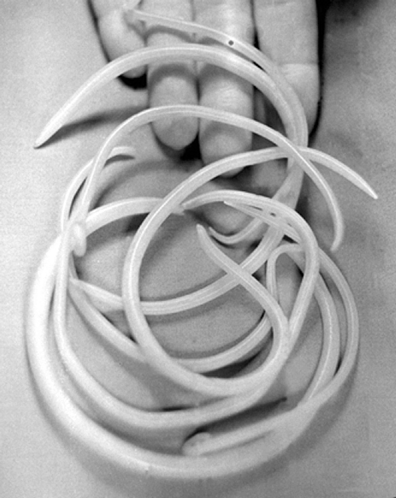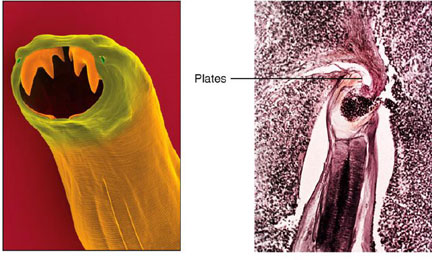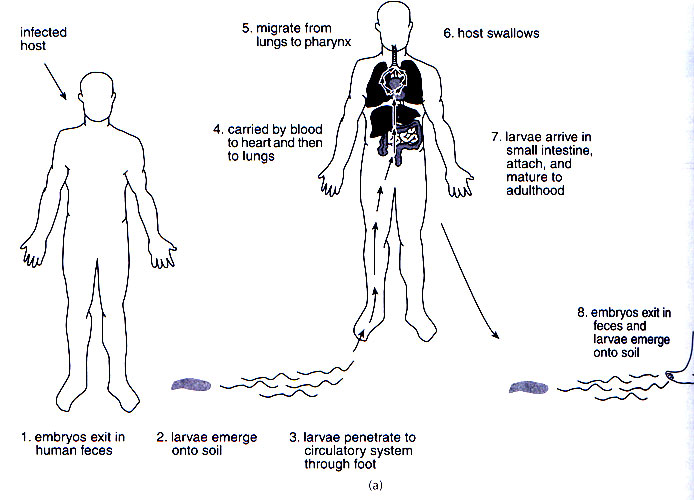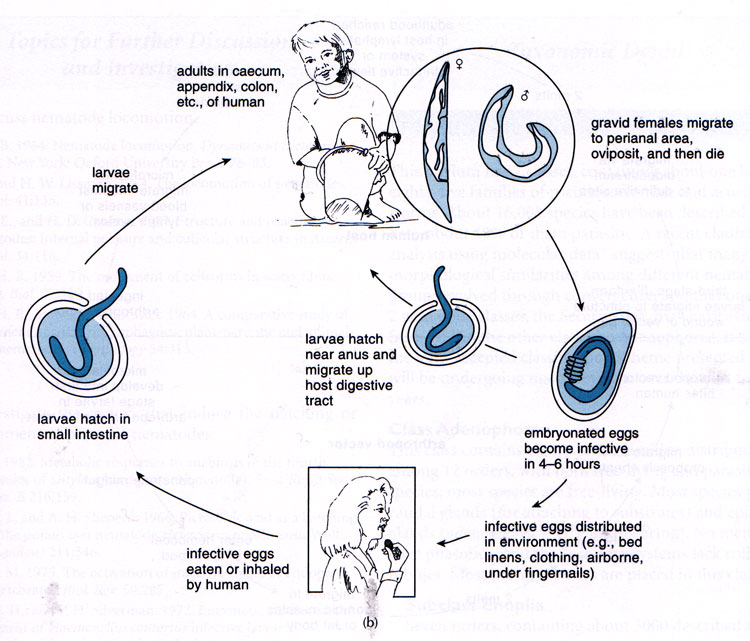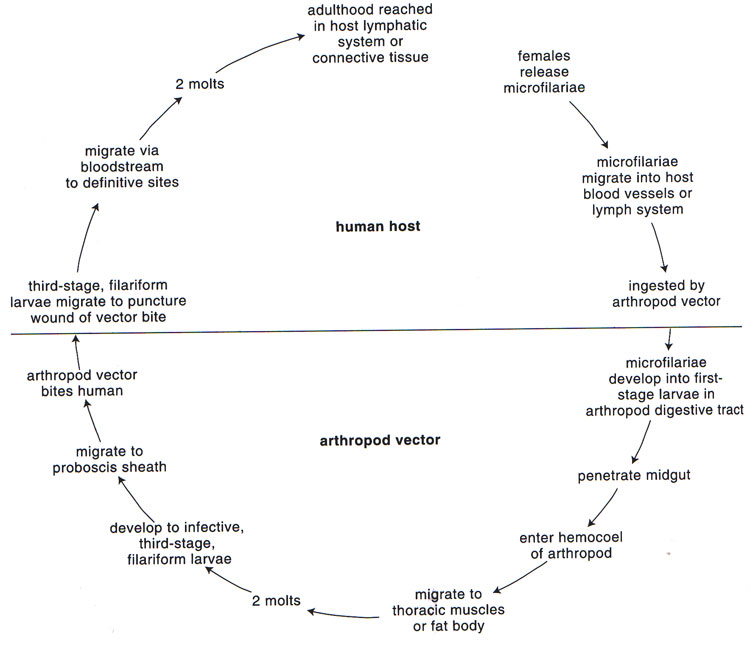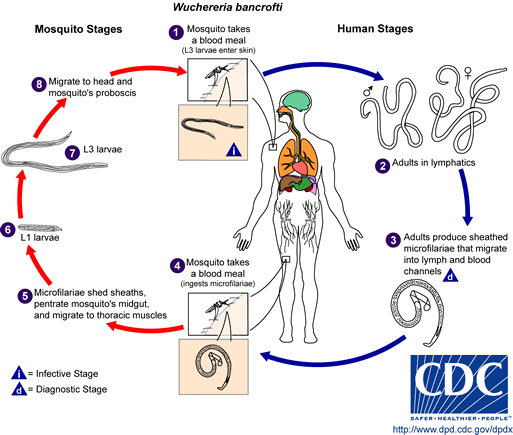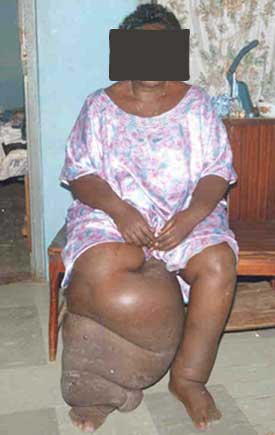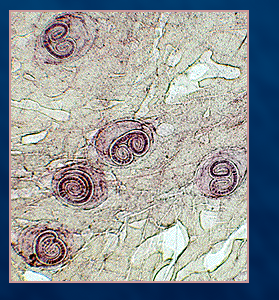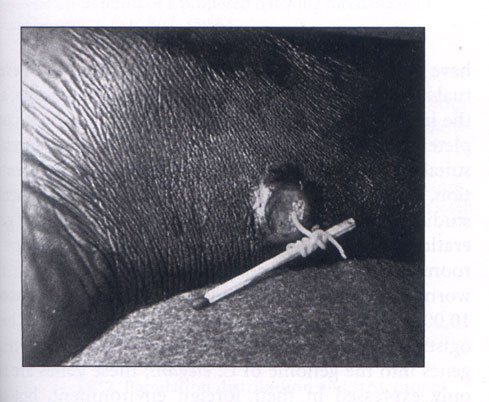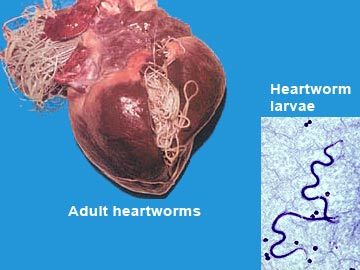As a whole the phylum is characterized by species with separate sexes, but a few species may be parthenogenetic or hermaphroditic. For example, in C. elegans, the hermaphrodite is XX and the male is XO. Sex is determined by the ratio of X chromosomes to autosomes. In closely related species of nematodes, XX females are found, suggesting that the hermaphrodites evolved from females. Somatically, the females and hermaphrodites are identical, the only difference being that the hermaphrodites make sperm during their early development before switching over to egg production. In C. elegans, there even exists a dominant mutation (tra-1D) that transforms XX or XO individuals into fertile females. In colonies with such an allele, three sexes are possible and functioning (Hodgkin, 1980).
Females are generally larger than males. Fertilization is internal. Copulatory spicules hold the male in place as he passes amoeboid sperm to the female.
Cleavage is non-spiral and involves strange chromosome diminution in non germ cells. Chromatin diminution is defined as chromosomal fragmentation, followed by the elimination of part of the chromosome during mitosis. By carefully analyzing the cell lineage, Boveri (1910)demonstrated that all cells which undergo chromatin diminution, and therefore contain less chromatin, became somatic cells, whereas nuclei retaining the original integrity of the chromosomes and the full quantity of chromatin gave rise to germ line cells . Thus the process of chromatin diminution is clearly linked to germ line-soma differentiation and in fact serves to distinguish cytologically the germ line and the somatic cell lineages.
Development is strongly determinate and in many species except in the germ cells, there is a fixed number of cells, or eutely.
Individuals molt through 4 juvenile instars (ecdysis) and resemble adults, but are called larvae. Use to be given specific names, but now simply referred to as LI, L2, L3 and L4.
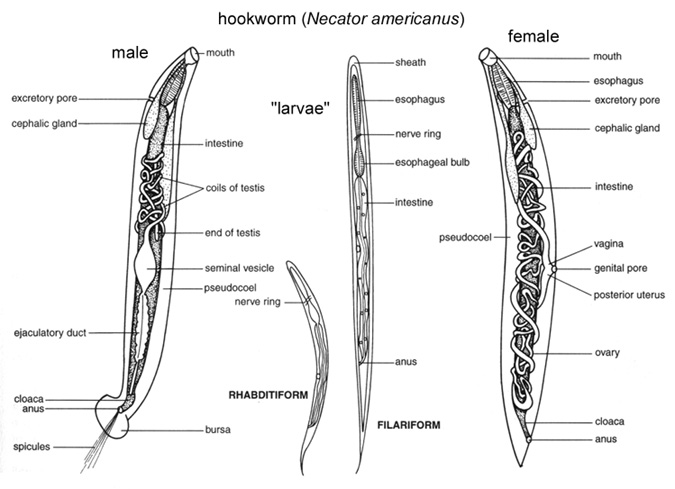
Many have the ability to withstand extremely dry, cold conditions, an adaptation known as cryptobiosis.
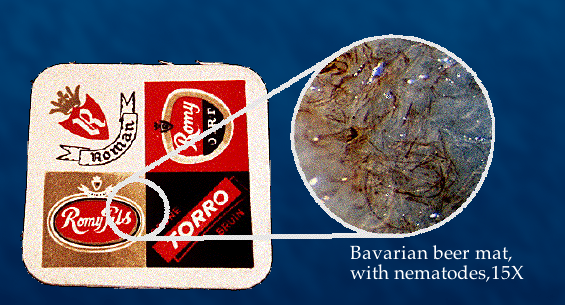
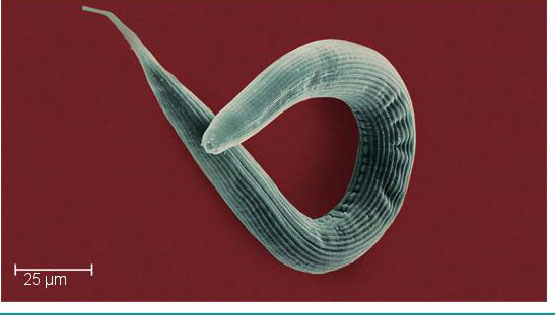
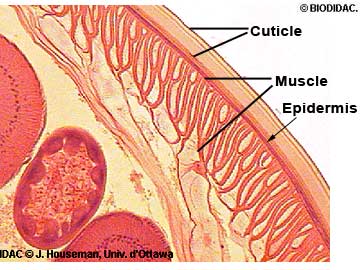
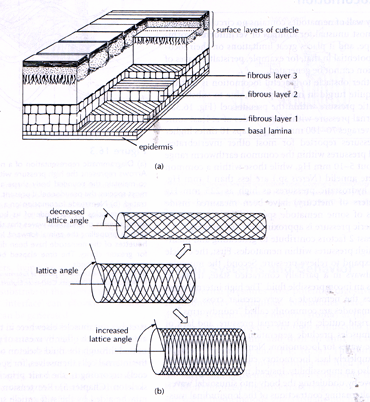



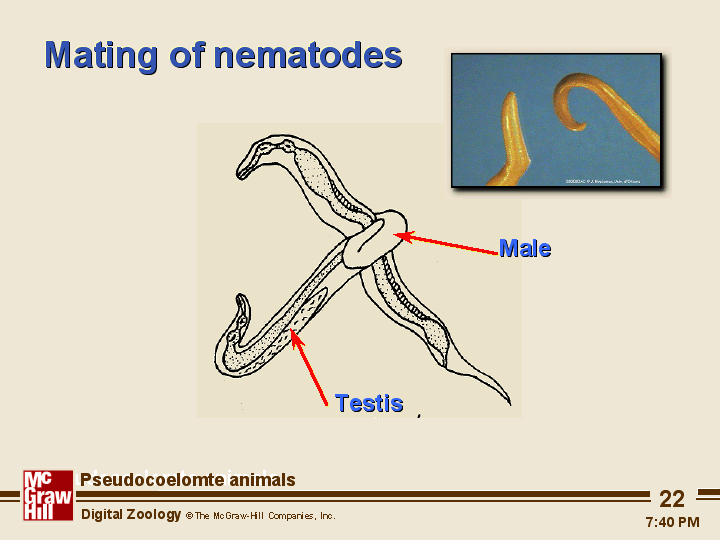

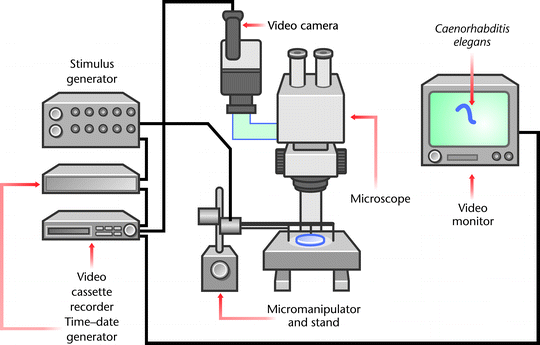
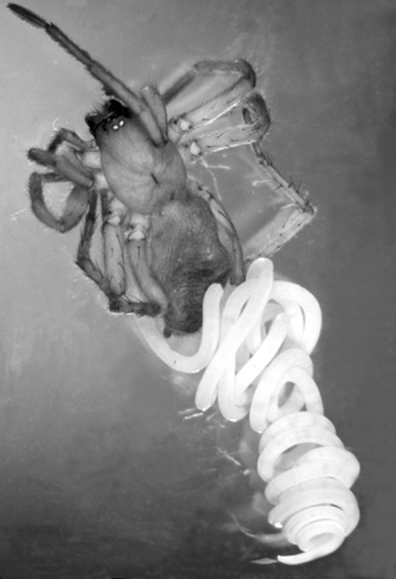 Nematode exits from a spider.
Nematode exits from a spider. 